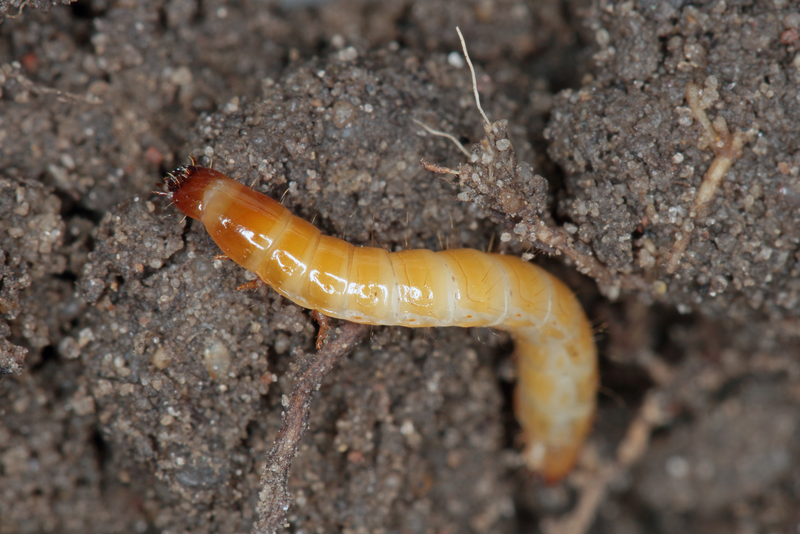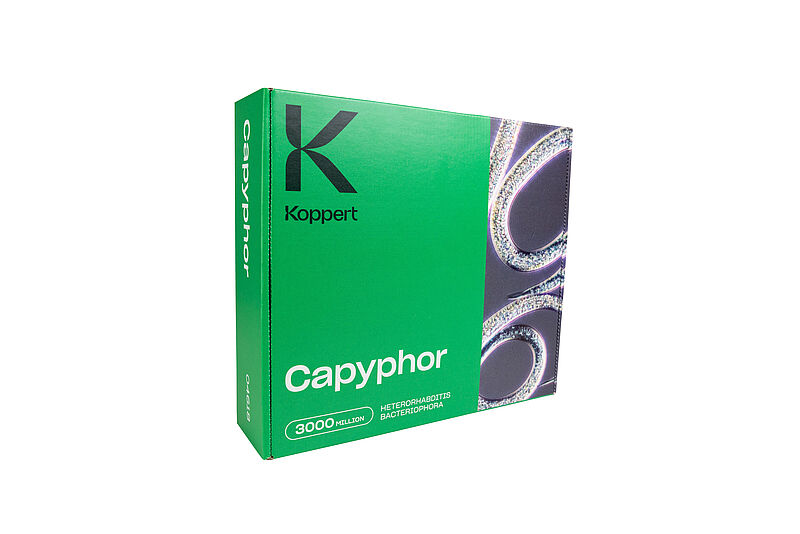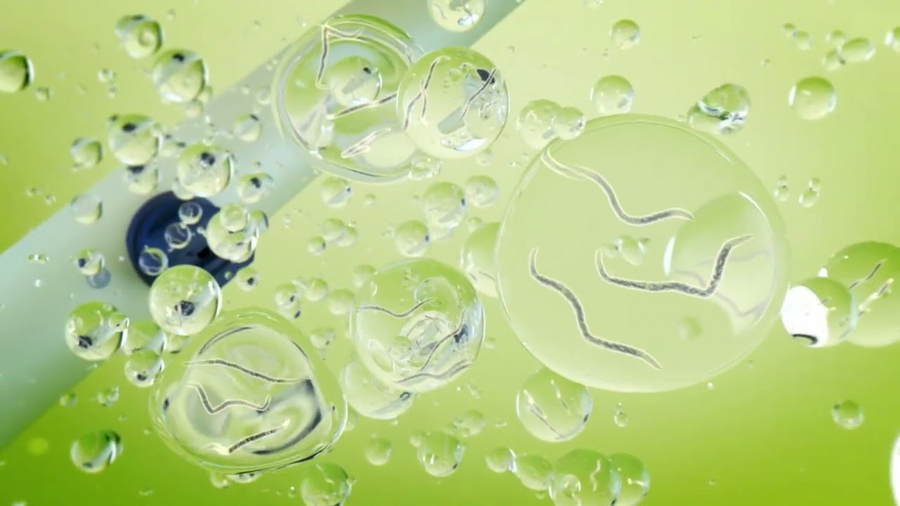Wireworms (Agriotes spp), the larval stage of click beetles belonging to the Elateridae family, pose a significant threat to potato production. Most of the effective conventional soil insecticides targeted at wireworms have been banned, and those still available work poorly in the soil. These slender, cylindrical larvae feed on underground plant parts, including potato tubers, causing tunnels and lesions that compromise the quality and marketability of the crop. Wireworm infestations can lead to reduced yields, increased susceptibility to other pests and diseases, and economic losses for potato growers.
Recognising A Wireworm Infestation
Common signs that indicate the presence of wireworms include irregular or shallow holes in potato tubers, often accompanied by tunnels and feeding marks. During early growth stages, wilting or stunted growth of potato plants may indicate wireworm damage to the root system. Monitoring for the presence of adult click beetles, which lay eggs in the soil, can help predict wireworm infestations and is also a helpful protocol in which to determine the species of the pest. Digging up soil samples and inspecting for wireworm larvae, which are slender, cylindrical, and typically yellow to brown in colour, will further confirm an infestation.

Effective Control With Beneficial Nematodes
Insect-parasitic nematodes, often referred to as entomopathogenic nematodes or beneficial nematodes, are a group of parasitic nematodes that have a unique relationship with insects. They play an important role in the biological control of many pests. Nematodes, microscopic roundworms found naturally in soil ecosystems, also offer a natural solution to wireworm infestations. Numerous results show that Koppert’s Casea (Steinernema carpocapsae) and Capyphor (Heterorhabditis bacteriophora) are effective biocontrol combinations to target wireworms in irrigated potatoes. When applied to the soil, these nematodes seek out wireworm larvae and infect them with symbiotic bacteria, causing death within a few days. Trial results show that by adopting beneficial nematodes damage to tubers can be reduced by up to 30%, which ultimately converts into higher yields and revenue. The nematodes are very flexible in terms of a temperature window, tolerating both cold and hot temperatures. Both these products are available in large agri-ready formats with a highly soluble biodegradable formulation.
 Both Koppert's Casea and Capyphor nematode products can be used to combat wireworms.
Both Koppert's Casea and Capyphor nematode products can be used to combat wireworms.
Application Techniques & Timing
Nematodes are typically applied to irrigated potato fields as a soil drench or through irrigation/spraying systems commonly used in agriculture. This ensures thorough coverage of the root zone where wireworms larvae are active. Timing is critical, as nematodes are most effective against young wireworm larvae in the soil. Early spring or late summer applications coincide with peak wireworm activity, maximising the impact of nematode biocontrol. A strategy of applying split doses can be followed to ensure that the whole risk period is covered.
The use of beneficial nematodes for wireworm control offers several advantages over traditional pesticides for both organic and conventional growers. Koppert nematodes easily integrate into an IPM program due to their compatibility with most pesticides and are highly effective in controlling harmful insects, while posing no risk to humans, animals, or plants – the perfect fit to control wireworms in potatoes, naturally and safely.

